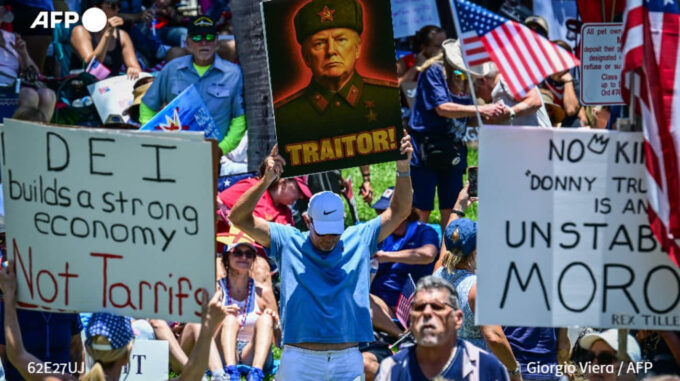Protest rallies against the Donald Trump administration have unfolded across the United States with varying intensity and scale

About hundreds of demonstrations took place in different cities nationwide last Saturday. The organizers of these events, under the slogan "No Kings," claim that millions of Americans participated in the protests, taking to the streets to express their discontent and to defend democracy from Trump’s potential abuse of power. According to the organizers, mass actions occurred not only in large metropolises but also in small towns, with each participant voicing their protest through anti-authoritarian slogans, calling to uphold democratic values and protect the rights of immigrants. Specifically, in Atlanta, which roughly gathered around 5,000 people, protesters quickly filled the main square, and thousands gathered behind barriers to listen attentively to speeches in front of the state administration building. In Seattle, according to local officials, over 70,000 people participated in the largest protest in the city center. This was one of the biggest rallies in all states, and its organizers stated that these demonstrations represent the voice of many who oppose the policies of the current leadership. Meanwhile, authorities across the country are taking measures to maintain public order, urging restraint and preventing violence. In some states, the National Guard has been mobilized in anticipation of large gatherings. Unlike previous events, clashes with law enforcement have been isolated, and in most cities, the demonstrations concluded without serious incidents. The most tense situation was recorded in Los Angeles, where police used tear gas and special equipment to disperse the crowd after the protest ended. Participants there protested against federal raids on immigrants last week, and additionally—as a response to Trump’s order to send the National Guard and Marine Corps to the state. In recent days, there have been road blockades, car burnings, and other acts of resistance in the city and its surroundings. In Portland, the situation remained tense until the evening: protesters gathered near the U.S. Immigration and Customs Enforcement building. Police used tear gas and special tools to disperse the crowd, signaling an increasing confrontation between authorities and activists. Another incident occurred in Salt Lake City, Utah, where police launched an investigation into a shooting during one of the mass marches in the city center. One participant was seriously injured, and according to the local police chief Bryan Redd, three people were detained, including the suspected shooter, who himself received gunshot wounds amid the conflict. These large-scale protests took place amid demonstrations sparked by the beginning of federal raids targeting immigrants, which started last week. In addition, significant news has been the deployment of military components—namely the National Guard and Marine Corps—to Los Angeles. Protesters there blocked highways, set vehicles on fire, and conducted acts of civil disobedience in an effort to draw attention to the threatening policies of the Trump administration regarding immigrants and civic society. There is a notable difference in approaches to protests compared to previous years. They have become more dispersed and localized — instead of one large demonstration across the country, a series of smaller rallies and protests are taking place in various regions. This indicates that resistance to Trump’s policies is becoming more organized and multi-layered. Given the situation, analysts do not rule out the possibility that in the coming weeks, these protests could grow even larger in scale and intensity. They not only reflect widespread discontent among broad segments of the population and civil society but could also significantly influence the country’s political landscape—potentially impacting government decisions and encouraging authorities to consider the voices of protesters. Also read: "Millions against Trump: how protests against the new administration began in the US and whether they will have a long-term impact."

